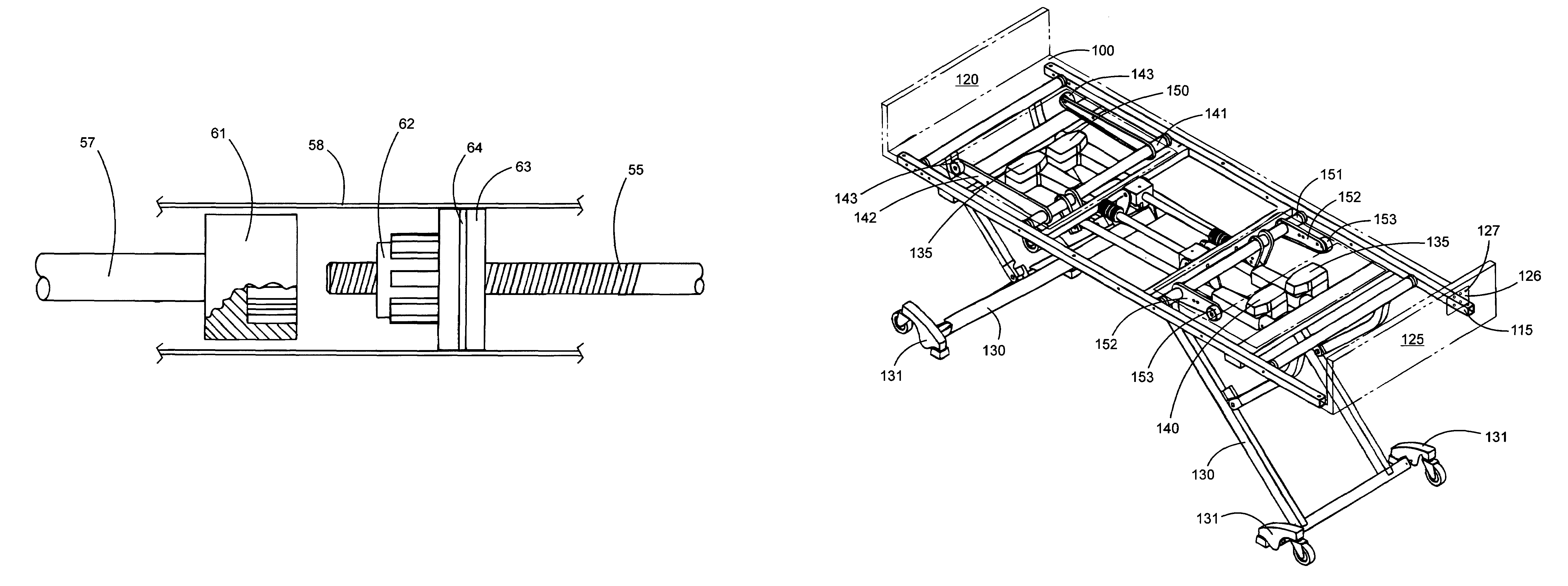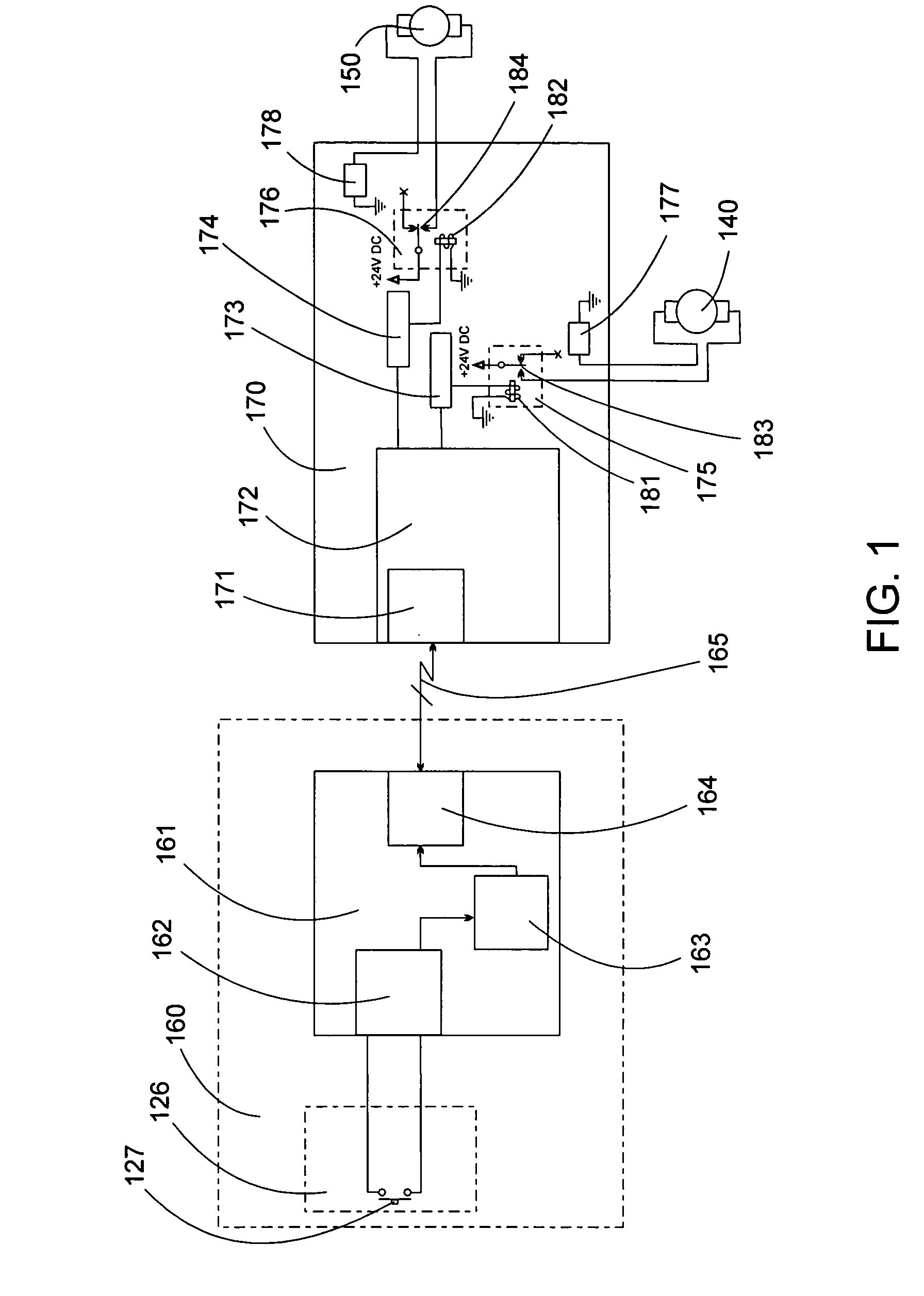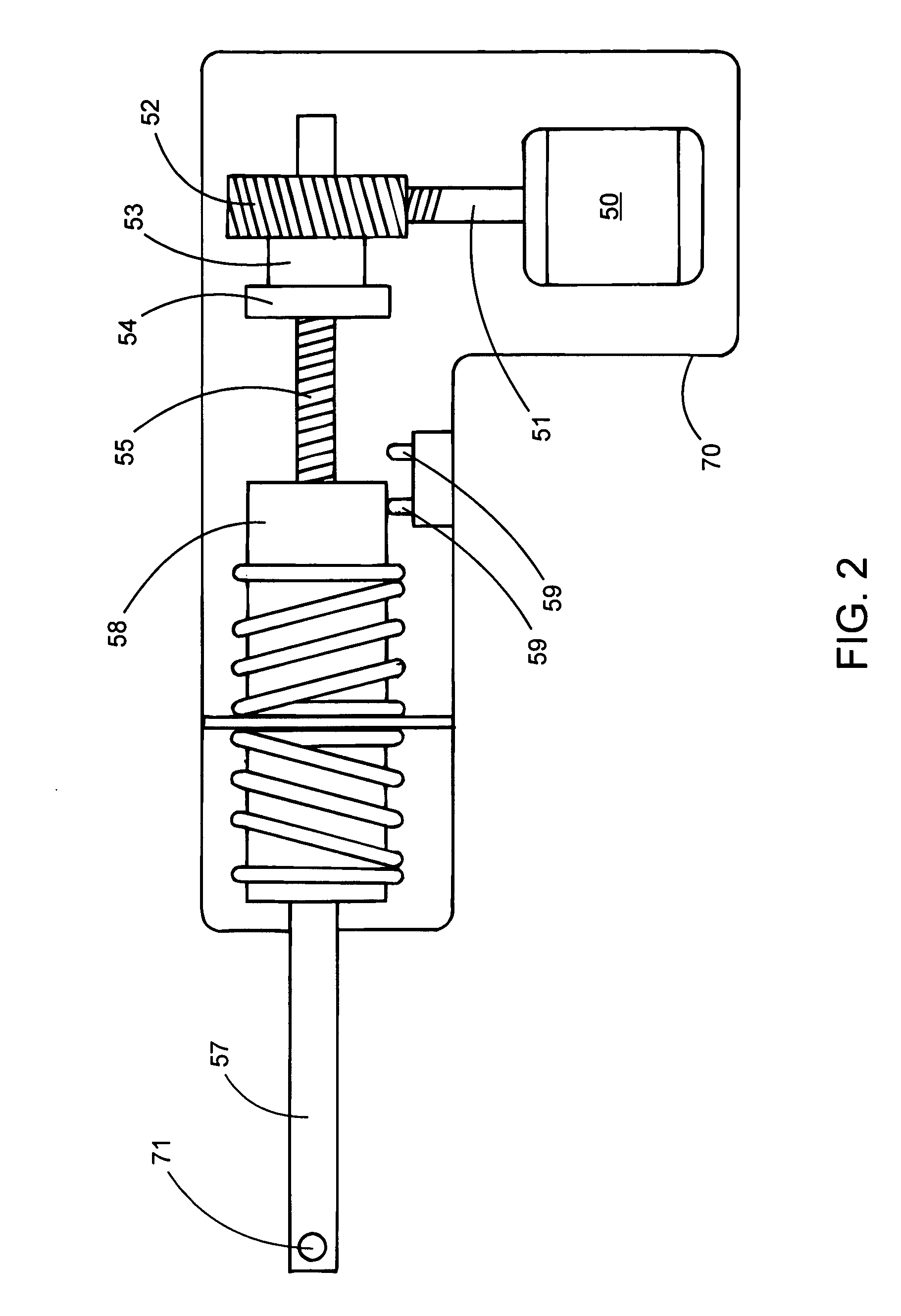Patient bed with CPR system
a patient bed and cpr technology, applied in the field of patient beds, can solve the problems of significant limitations in the design of beds, physical limitations of the bed operator, and the use of electrical components in patient beds
- Summary
- Abstract
- Description
- Claims
- Application Information
AI Technical Summary
Benefits of technology
Problems solved by technology
Method used
Image
Examples
Embodiment Construction
[0039]Referring to FIG. 1, an electrical schematic of an emergency system of the present invention is depicted. A single push-button emergency switch 127 is located on a control panel 126 on a foot board of an electrically operated patient bed. Associated with the control panel 126 is a control panel microcontroller 161, which together form a foot board staff control unit 160. Other control buttons (not shown) are also on the control panel 126 and are associated with the control panel microcontroller 161. The control panel microcontroller 161 comprises, among other elements (not shown), a button decoder 162, a timer 163 and a first UART serial port 164. In an emergency situation, an attendant pushes the emergency switch 127 thereby sending a signal to the button decoder 162 which is programmed to distinguish between the buttons on the control panel. Having determined that the emergency switch 127 was pushed, the button decoder 162 sends a signal to the timer 163 which is programmed ...
PUM
 Login to View More
Login to View More Abstract
Description
Claims
Application Information
 Login to View More
Login to View More - R&D
- Intellectual Property
- Life Sciences
- Materials
- Tech Scout
- Unparalleled Data Quality
- Higher Quality Content
- 60% Fewer Hallucinations
Browse by: Latest US Patents, China's latest patents, Technical Efficacy Thesaurus, Application Domain, Technology Topic, Popular Technical Reports.
© 2025 PatSnap. All rights reserved.Legal|Privacy policy|Modern Slavery Act Transparency Statement|Sitemap|About US| Contact US: help@patsnap.com



